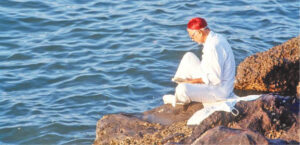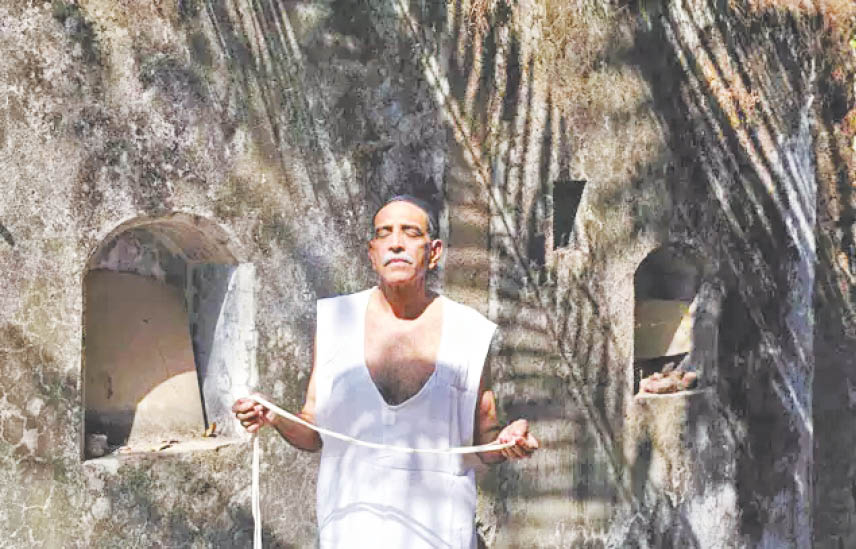 In keeping with readers writing in questions seeking answers to their various religious and cultural queries, scholar in Zoroastrian religion and culture – Noshir Dadrawala, responds…
In keeping with readers writing in questions seeking answers to their various religious and cultural queries, scholar in Zoroastrian religion and culture – Noshir Dadrawala, responds…
Queries from Parsi Times reader Adil Kasad:
- Is it true that only the Atash Nyaish can be prayed in front of the kebla, and that other Nyaish cannot be prayed in front of the kebla but can be prayed at other place where the holy fire is not kept?
- From childhood, we are told that we should pray sitting / standing at one place only and not keep moving, as the effects of prayers gets diminished. What is the remedy because if we adhere to one tradition we will be breaking the other?
- What about the Dasturji / Mobed who prays other the Nyaish in front of kebla? Is it that the Dasturji / Mobed are allowed to pray Nyaish in front of kebla but the behdins are not?
Noshir Dadrawala Responds:
It is important to understand and to be aware of the fact that Nyaish is a litany to various Divine forces. For example, the Khurshed Nyaish is a litany to the Sun while the Meher Nyaish is a litany to the rays of the sun or sunlight. Both these Nyaish are considered as Farazyat or obligatory prayers to be prayed daily. The Avan Nyaish is a litany to the waters. The Mah Bakhtar Nyaish is litany to the moon and Atash Nyaish is litany to the fire.
There are rules pertaining to reciting these litanies. For example, the Khurshed and Meher Nyaish should be recited only during daytime when the sun and sunlight is visible. Similarly, it is forbidden to pray the Avan Nyaish at night or to disturb any natural water body at night. However, the Mah Bakhtar Nyaish and Atash Nyaish can be prayed during daytime as well as at night.
Ideally, every Nyaish should be prayed facing the Divinity that is being propitiated. Thus, the Khurshed and Meher Nyaish should be prayed facing the sun or the direction of the sun during the daytime. The Avan Nyaish should be prayed before a natural body of water (e.g., near a well) while the Atash Nyaish should be prayed facing the fire.
When Visiting A Fire Temple…
When we pay a visit to the fire-temple, after performing the Padyaab Kushti, the devotee should find a suitable corner from where he or she could pray the Sarosh Baaj, the appropriate Geh and pray the Khurshed and Meher Nyaish, facing the sun or sunlight. If the devotee wishes to pray the Avan Nyaish, he or she may proceed towards the well in the compound of the Agyari or/and offer litany to the waters. After this, the devotee may walk inside the building and facing the fire, offer litany to the Holy Fire by chanting the Atash Nyaish, preferably standing. Thus, there is no need to stand or sit only in one place and offer all the prayers.
Kebla or Kibla is a sacred object or sacred place worthy of reverence. The sun and moon are a natural Kebla and it is only appropriate that litany is offered facing the right Kebla. As a human being, how would you like it if someone was talking to you but facing someone or something else? You would consider it rude, isn’t it? It’s the same with offering prayers. Face the appropriate Kebla.
With regard to the tariquat (spiritual discipline) of prayers, the same rules apply – be it for the priest or laity.
Pray With Joy And Gratitude…
What is important is to pray with joy, awareness and understanding. While eating the right foods in the right way nourishes the body, chanting the right prayers in the right way nourishes the spirit.
When offering litany to the sun, the moon, water or fire know that you are offering gratitude and making an attempt to attune your Divine Essence with the Divine Essence of these life giving Energies of Nature.
While chanting prayers has a calming effect on the mind it also energises and harmonises body, mind and spirit creatively and positively.
There’s also research backing the idea that meditation and prayer can trigger the release of feel-good chemicals in the brain. Dr. Loretta G. Breuning, founder of the Inner Mammal Institute and the author of ‘The Science of Positivity’ and ‘Habits of a Happy Brain’, explains that when we pray, we activate neural pathways that we developed when we were young, to release hormones such as oxytocin. ‘Oxytocin’ provides us with the ‘feel good factor’ despite living in a world of stress and uncertainty.
- Why Pray In A Language We Do Not Understand? - 29 March2025
- Celebrate Nature’s New Year With Purity And Piety of Ava - 22 March2025
- Celebrate Navruz 2025 With The Spirit Of Excellence And Wholesomeness - 15 March2025
